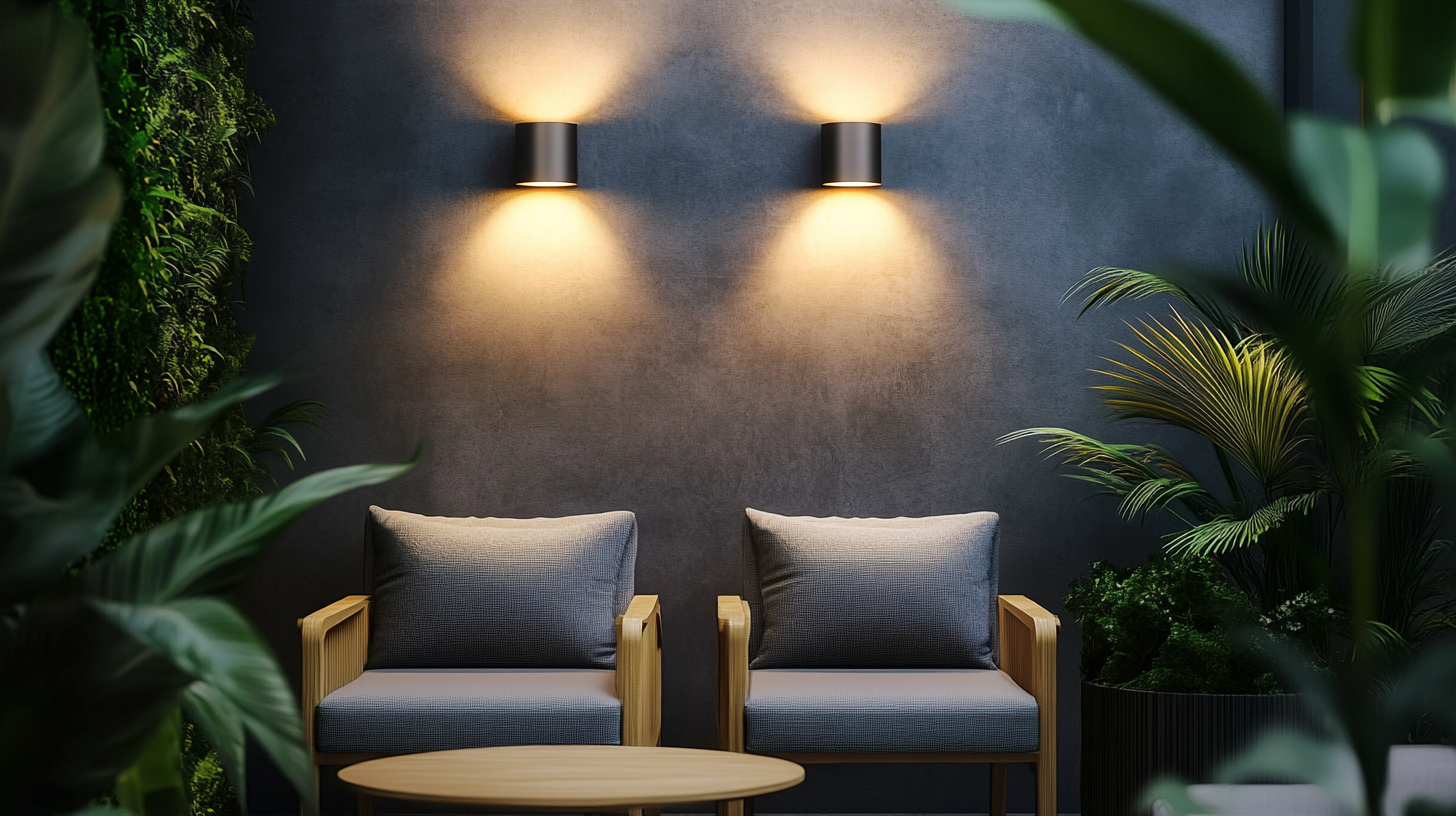Challenges Faced by Global Buyers When Sourcing Wall Lights from Manufacturers
In recent years, the global market for wall lights has experienced significant growth, yet it remains fraught with challenges for buyers sourcing from manufacturers. According to a report by MarketsandMarkets, the global decorative lighting market, which includes wall lights, is projected to reach USD 180.6 billion by 2026, growing at a CAGR of 5.4%. This increasing demand reflects a trend towards enhancing interior aesthetics and energy efficiency in residential and commercial spaces. However, this surge in popularity also brings complexities, particularly for international buyers who navigate diverse manufacturing standards, varying quality levels, and logistical hurdles that can affect the final product.
Moreover, the rise of e-commerce has expanded sourcing options, but it has also introduced new challenges. A study by Statista revealed that in 2022, approximately 26% of buyers faced difficulties related to supply chain disruptions when procuring decorative lighting fixtures, including wall lights. Such challenges can lead to delays, increased costs, and difficulties in ensuring compliance with regional regulations. As global buyers strive to make informed decisions while balancing quality, cost, and timeliness, understanding the landscape of sourcing wall lights has become more crucial than ever.

Identifying Reliable Manufacturers for Wall Light Sourcing
When sourcing wall lights, one of the most significant challenges global buyers encounter is identifying reliable manufacturers. A recent report from the International Lighting Market Research Center indicates that nearly 30% of buyers experience difficulties due to a lack of transparency and inconsistent product quality among manufacturers. This underlines the imperative for buyers to engage in thorough vetting procedures before committing to a supplier. Another hurdle is the geographical disparity in manufacturing hubs, particularly in Asia, where about 60% of global lighting products are produced. According to a survey conducted by the Global Lighting Association, 42% of buyers expressed concerns over communication barriers and cultural differences during the sourcing process. Establishing clear communication channels and understanding cultural nuances can significantly impact the effectiveness of partnership negotiations, fostering trust and collaboration. Furthermore, the rise of online marketplaces has made it easier for buyers to connect with multiple manufacturers; however, this has also led to an influx of unreliable suppliers. The recent “Buyers’ Insight Report” highlighted that 47% of respondents faced issues with counterfeit products and misleading warranties. To mitigate these risks, buyers should prioritize manufacturers who provide comprehensive documentation of their certifications and product guarantees. By adopting a meticulous approach in evaluating potential partners, global buyers can not only ensure the quality of their wall lights but also build longstanding relationships with trustworthy manufacturers.

Navigating Quality Standards and Compliance Issues
In the current landscape of global sourcing, buyers face a myriad of challenges when navigating quality standards and compliance issues, particularly when sourcing wall lights from various manufacturers. The intricacies involved range from ensuring that products meet international safety standards to adhering to local regulations that can substantially differ across regions. It is crucial for buyers to conduct thorough due diligence to verify that manufacturers not only claim compliance but also consistently deliver products that meet established quality benchmarks.
Recent developments highlight the importance of robust compliance systems, as illustrated by the response from a prominent hygiene product brand addressing concerns over product quality. This situation underscores the potential consequences of lapses in quality assurance and the need for rigorous checks during the sourcing process. Buyers must establish clear communication channels with manufacturers to foster transparency and build a trustworthy partnership that prioritizes product integrity.
Moreover, as the global economy increasingly intertwines, compliance challenges are amplified by cultural, political, and legal variances across different sourcing markets. Buyers venturing into regions with such discrepancies should be acutely aware of local regulatory frameworks and consumer expectations, adapting their sourcing strategies accordingly to mitigate risks. This proactive approach will not only enhance their supply chain resilience but also reassure consumers of the safety and quality of their purchases, ultimately bolstering brand reputation in an ever-competitive marketplace.

Understanding Cost Variability and Pricing Strategies
When sourcing wall lights from manufacturers globally, buyers often encounter significant cost variability, influenced by various pricing strategies. A recent report from Grand View Research highlights that the global market for lighting fixtures is projected to reach USD 190.6 billion by 2025, growing at a compound annual growth rate (CAGR) of 5.0%. This robust growth reflects not only a rising demand for innovative lighting solutions but also the complexities that buyers must navigate in terms of pricing.
One of the primary challenges lies in the diverse pricing strategies employed by manufacturers, which can vary dramatically based on region, production methods, and material costs. For instance, a study by IBISWorld reveals that production costs for lighting fixtures can differ by as much as 30% depending on whether the lights are manufactured in low-cost regions like Southeast Asia or more developed markets like Europe. Additionally, fluctuating raw material prices—driven by changes in global supply chains—further contribute to the unpredictability in pricing. Buyers must stay vigilant and informed about these variable costs to make prudent sourcing decisions.
Furthermore, the shift toward sustainable and energy-efficient lighting options has introduced additional complexities. According to a report from Mordor Intelligence, the demand for LED wall lights, which are often perceived as higher-priced alternatives, is expected to increase by 20% in the next few years. Manufacturers adopting eco-friendly practices may implement premium pricing models that reflect their commitment to sustainability, compelling buyers to balance cost with their social responsibility goals. Understanding these dynamics is crucial for global buyers to effectively navigate the intricate landscape of wall light sourcing.

Overcoming Language Barriers and Cultural Differences
When sourcing wall lights from manufacturers across the globe, buyers often encounter significant challenges that stem from language barriers and cultural differences. Communication is critical in ensuring that specifications, expectations, and requirements are understood and met. According to a report by Common Sense Advisory, 75% of consumers prefer to buy products in their native language, which highlights the necessity for manufacturers and buyers to bridge linguistic divides. This means that global buyers must invest in translation services or bilingual staff to facilitate clear communication.
Cultural differences also play a pivotal role in international business dealings. A study published in the Journal of International Business Studies indicated that lack of cultural awareness can lead to misunderstandings and conflicts during negotiations. For example, different countries have varying attitudes towards time management, hierarchy, and business etiquette, which can influence how deals are conducted. Buyers need to undertake thorough research into cultural norms of their suppliers to tailor their approach effectively, ensuring that they build strong, respectful relationships.
Real-world experiences further illustrate these challenges. For instance, Chinese students studying in the United States often struggle with language and cultural adaptation, impacting their academic performance and social interactions. Educational institutions are realizing the importance of providing additional support to these students, such as language tutoring and cultural orientation programs, which can serve as a model for businesses sourcing products internationally. By adopting similar strategies, global buyers can enhance their sourcing experience and establish more fruitful collaborations with manufacturers.
Managing Logistics and Shipping Challenges in Global Sourcing
When sourcing wall lights from manufacturers around the globe, one of the most significant hurdles that buyers encounter is effectively managing logistics and shipping challenges. The intricate process of transporting goods across international borders requires meticulous planning and coordination, as delays, customs regulations, and varied shipping costs can severely impact project timelines and budgets. Buyers must navigate a complex landscape of international freight options, balancing speed with cost-efficiency while ensuring that the quality of the products remains intact during transit.
Additionally, communication plays a pivotal role in overcoming these logistical challenges. Buyers need to establish clear lines of communication with manufacturers and freight forwarders to stay informed about shipping schedules and any potential issues that may arise during the shipping process. Time zone differences and language barriers can complicate these interactions, making it essential for buyers to work with experienced partners who understand the nuances of global trade. Furthermore, the use of technology, such as shipping management software, can help streamline logistics and provide real-time updates, allowing for better decision-making and problem-solving.
Adapting to fluctuating global shipping rates and the ongoing changes in trade policies also presents a challenge. Buyers must stay informed about market trends and be prepared to adjust their sourcing strategies accordingly. By diversifying suppliers and exploring different shipping routes, businesses can hedge against potential disruptions and ensure that their wall light sourcing remains resilient in the face of logistical challenges.






